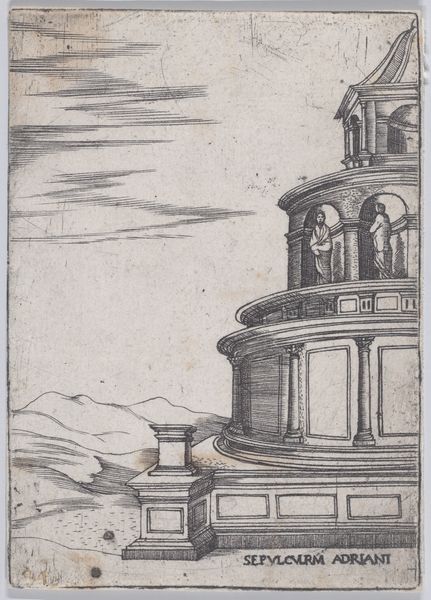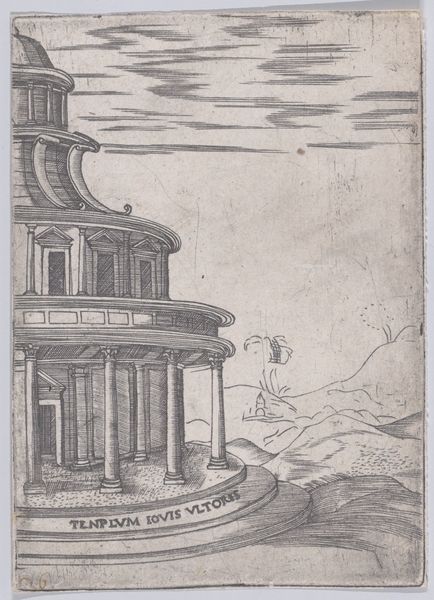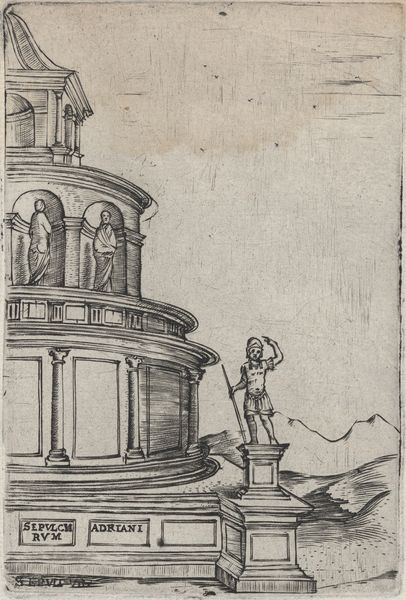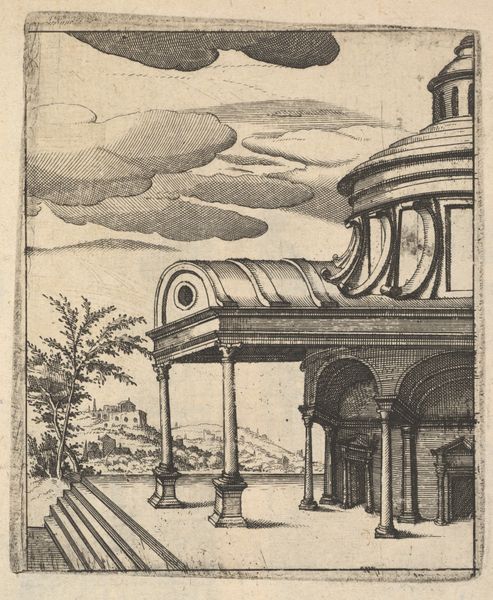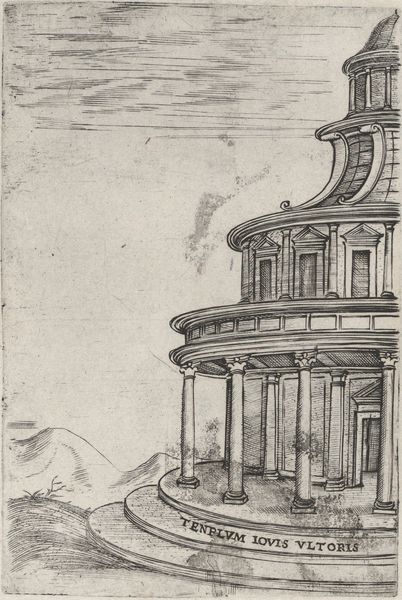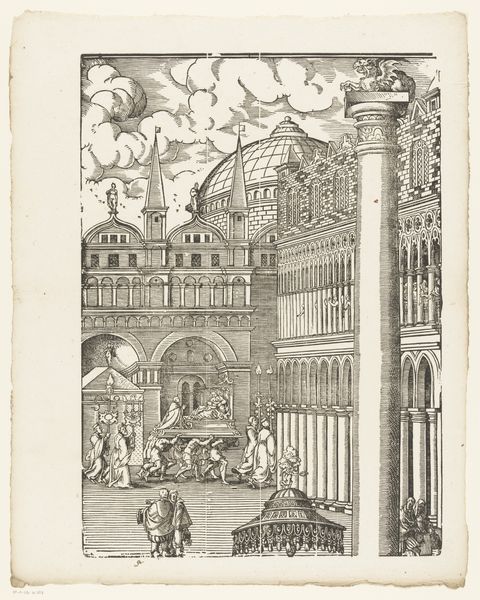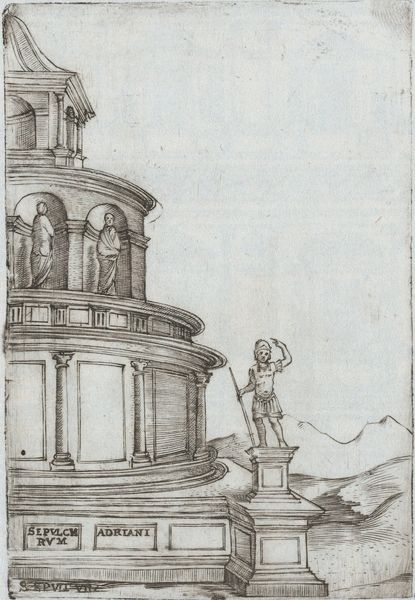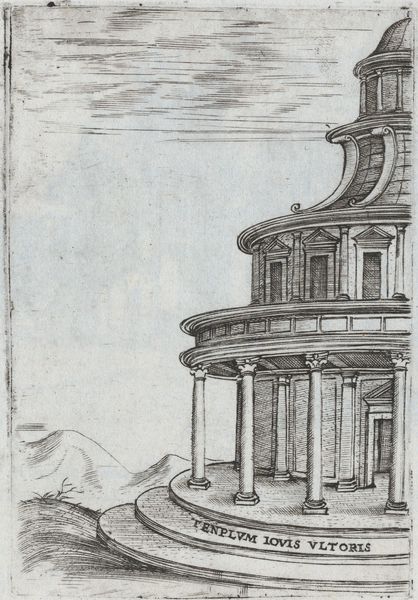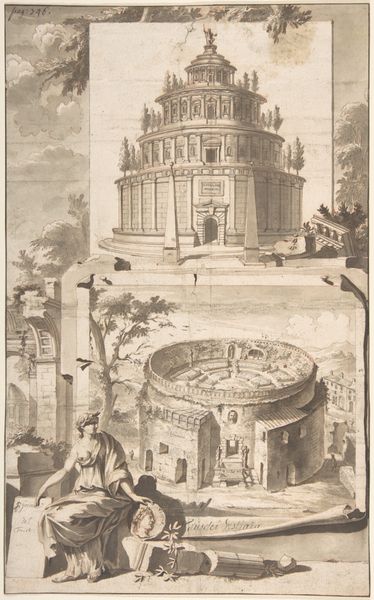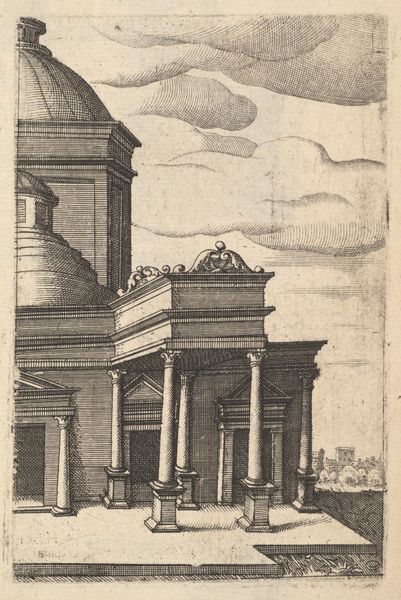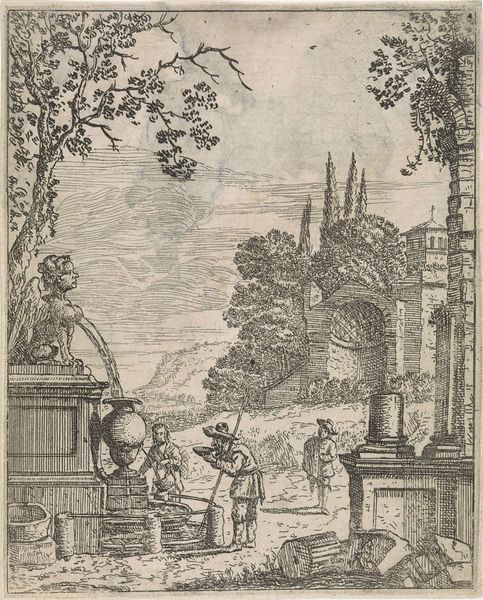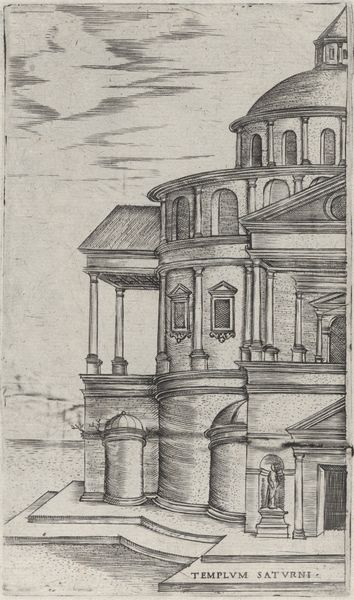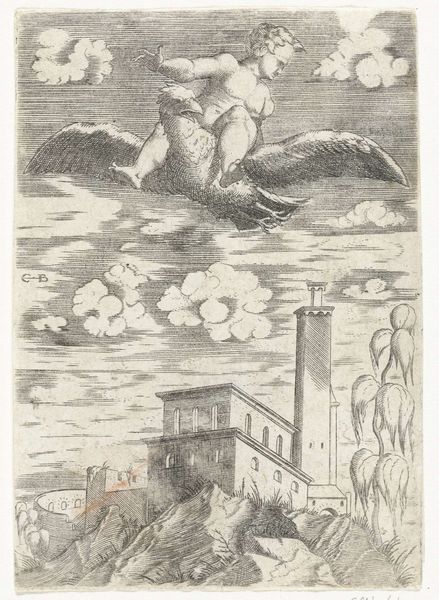![Partial view of a Building [Sepulchrum Adriani] from the series 'Ruinarum variarum fabricarum delineationes pictoribus caeterisque id genus artificibus multum utiles' by Lambert Suavius](/_next/image?url=https%3A%2F%2Fd2w8kbdekdi1gv.cloudfront.net%2FeyJidWNrZXQiOiAiYXJ0ZXJhLWltYWdlcy1idWNrZXQiLCAia2V5IjogImFydHdvcmtzL2M2MmI1M2Y3LWMzZjYtNDE3OS04YTE0LTgyYWJiMDU1ZjAyOC9jNjJiNTNmNy1jM2Y2LTQxNzktOGExNC04MmFiYjA1NWYwMjhfZnVsbC5qcGciLCAiZWRpdHMiOiB7InJlc2l6ZSI6IHsid2lkdGgiOiAxOTIwLCAiaGVpZ2h0IjogMTkyMCwgImZpdCI6ICJpbnNpZGUifX19&w=3840&q=75)
Partial view of a Building [Sepulchrum Adriani] from the series 'Ruinarum variarum fabricarum delineationes pictoribus caeterisque id genus artificibus multum utiles' 1554
0:00
0:00
drawing, print, intaglio, sculpture, engraving
#
drawing
# print
#
intaglio
#
landscape
#
figuration
#
11_renaissance
#
classicism
#
sculpture
#
history-painting
#
academic-art
#
engraving
#
building
Dimensions: Plate: 5 1/2 × 3 1/8 in. (13.9 × 8 cm)
Copyright: Public Domain
Curator: Lambert Suavius brings us “Partial view of a Building [Sepulchrum Adriani] from the series 'Ruinarum variarum fabricarum delineationes pictoribus caeterisque id genus artificibus multum utiles'” created around 1554. It’s an intaglio print, using engraving, which captures a ruinous architectural scene. Editor: It's incredibly evocative. I’m immediately struck by the visual language of decay and the grandeur of what once must have been, but I’m also thinking of this work in terms of gender, power, and class. The remnants of an old empire and the new powers looking to ancient art for inspiration... Curator: That’s interesting. The print is fascinating for how it showcases Suavius’s skill with the engraving tool; notice the texture, the way he differentiates between stone, sky, and even the foliage. It makes you wonder about the role prints played, functioning almost as technical drawings accessible to many. How does its mass reproducibility shift the social impact? Editor: Exactly, and how is this architectural decay serving the viewer? Are we reflecting on empires, labor, or more on a cultural inheritance? Consider who these prints were meant for, and their accessibility reflects a desire for knowledge to spread. And how about these figures; the statues and representations of powerful bodies in the frame—what were the expectations? Curator: It emphasizes how knowledge of the antique was manufactured. But back to technique, consider the process involved in intaglio. The physical act of etching, the materials involved—copper, acid—all influencing the final image. How did those constraints affect his artistry? Editor: The artist, of course, always shapes their own means to a goal. Here we might see that engagement between the old and the new playing out in cultural values during the renaissance. These prints aren't mere representations but active agents. And these buildings, these institutions - are they sites of change or oppression? This becomes very powerful, seeing history in fragments through these prints. Curator: Indeed, it bridges the gap between a technical exercise and a deeply human story of influence and appropriation. What strikes me is the delicate balance between craft, technology, and the artist's interpretation of an era through its materials. Editor: Right. When viewed critically, this unassuming print raises complex issues regarding our role in the world. This work prompts reflections on the historical conditions that underpin not just art, but also our societies, politics, and ethics.
Comments
No comments
Be the first to comment and join the conversation on the ultimate creative platform.
